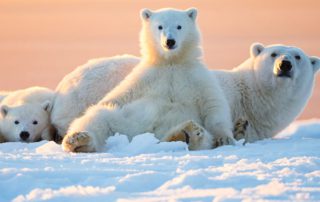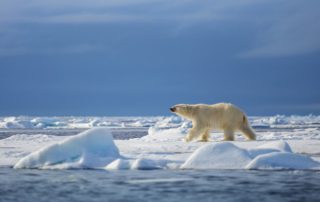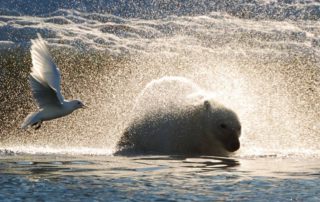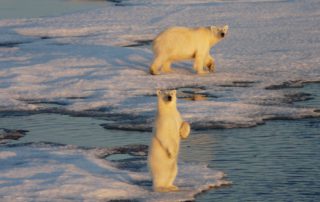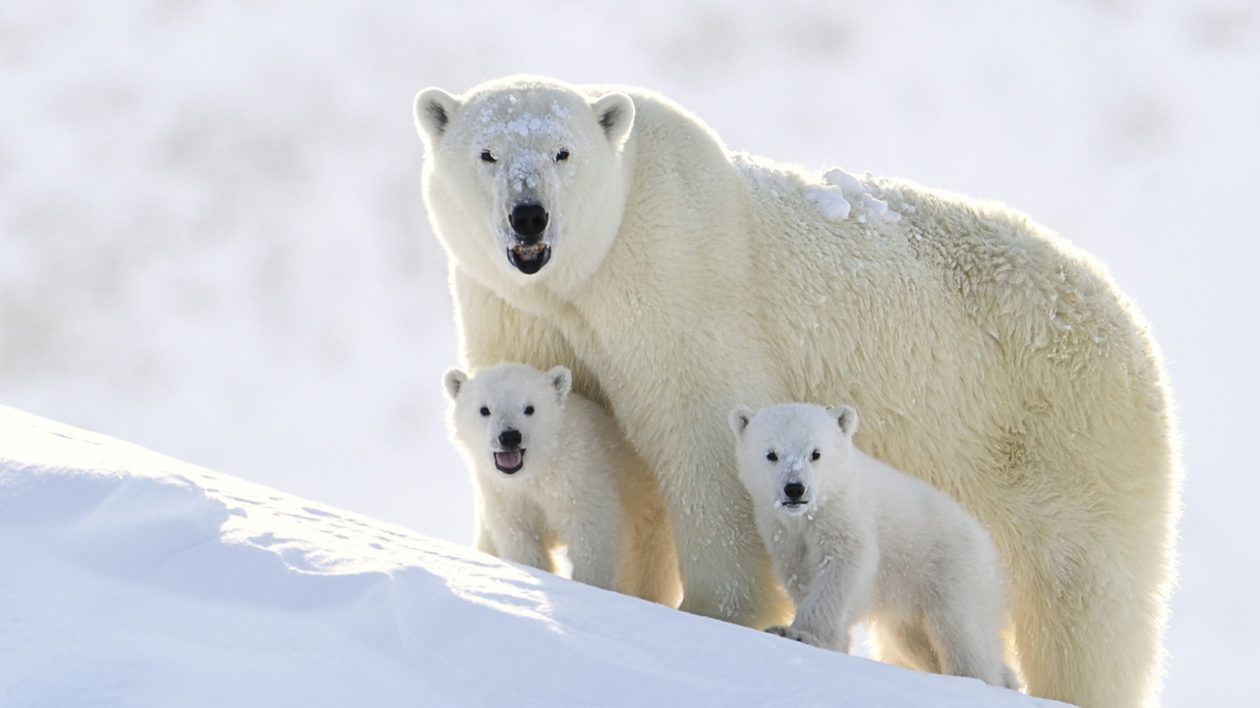
How much does a polar bear weigh?
The average adult female weights about 570 pounds. A fully grown male weighs around 1,000 pounds – almost twice the size of a female polar bear. They are the world’s largest land predator and biggest member of the bear family.
Polar bear diet, what do polar bears eat?
Seals make up most of a polar bear’s diet. In addition to seals they also eat small mammals, birds, eggs and vegetation. The huge bears don’t even fear humans, which makes them dangerous.
Polar bear habitat, where can you spot a polar bear?
Although most polar bears are born on land, they spend most of their time at sea. At Svalbard the chances are high that you get to spot a polar bear as it boasts the highest population of Polar bears. The arctic circle is the only place in the world where you can see this magnificent creature in its natural habitat.
How far can a polar bear swim?
The longest recorded nonstop swim a polar bear has ever made is 426 miles over nine days straight.
How many cubs does a polar bear have?
Female polar bears typically give birth to two cubs or “twins”. The two cubs stay with her for more than two years until they can hunt and survive on their own. The breeding season starts in March and ends in June, each year. The chubs enter therefore the world during the months of November, December and January.
Polar bear lifespan – How many years does a polar bear live?
The average lifespan of the bear in the wild is 15 to 18 years. Polar bears can live until they’re 30 years old, but few bears live for that long.
The black polar bear
Polar bears are actually black, not white. Under their white fur – which is great camouflage – polar bears have black skin to better soak in the sun’s warmth.
Are there any other names for Polar bear?
In Norway the polar bear are called “isbjorn”, meaning ice bear. In Russia they call the bear “beliy medved” meaning “the white bear”. The Latin name for polar bears is “ursus maritimus,” which means sea bear. In Inuit mythology, the polar bear is called Pihoqahiak, the “ever-wandering one.”
